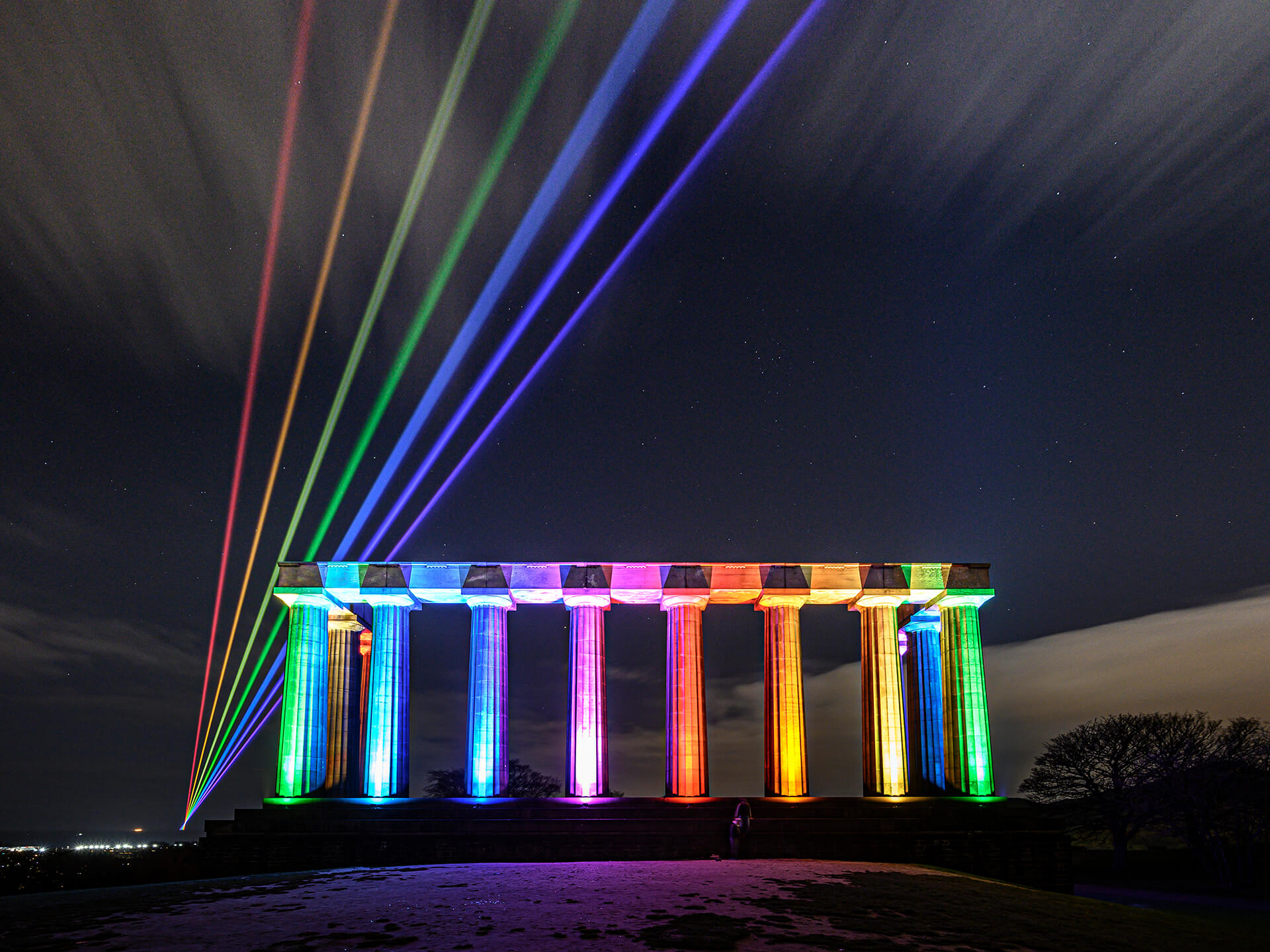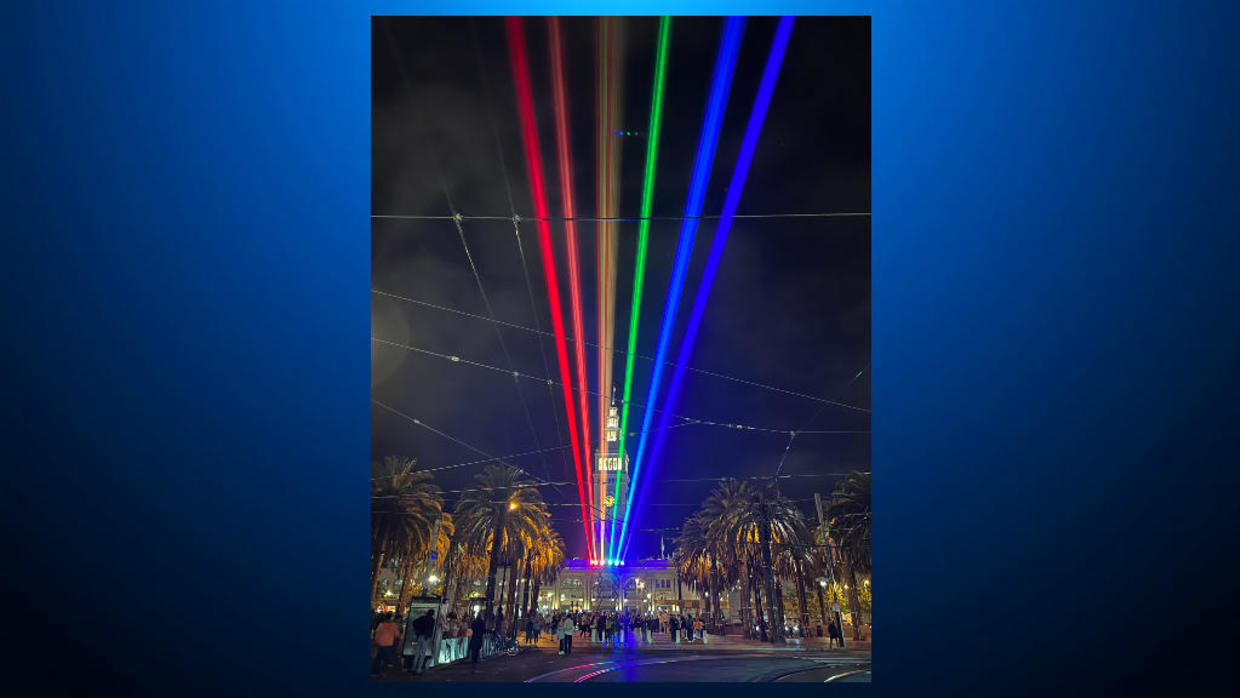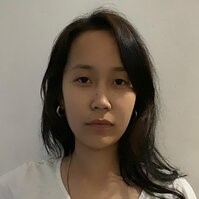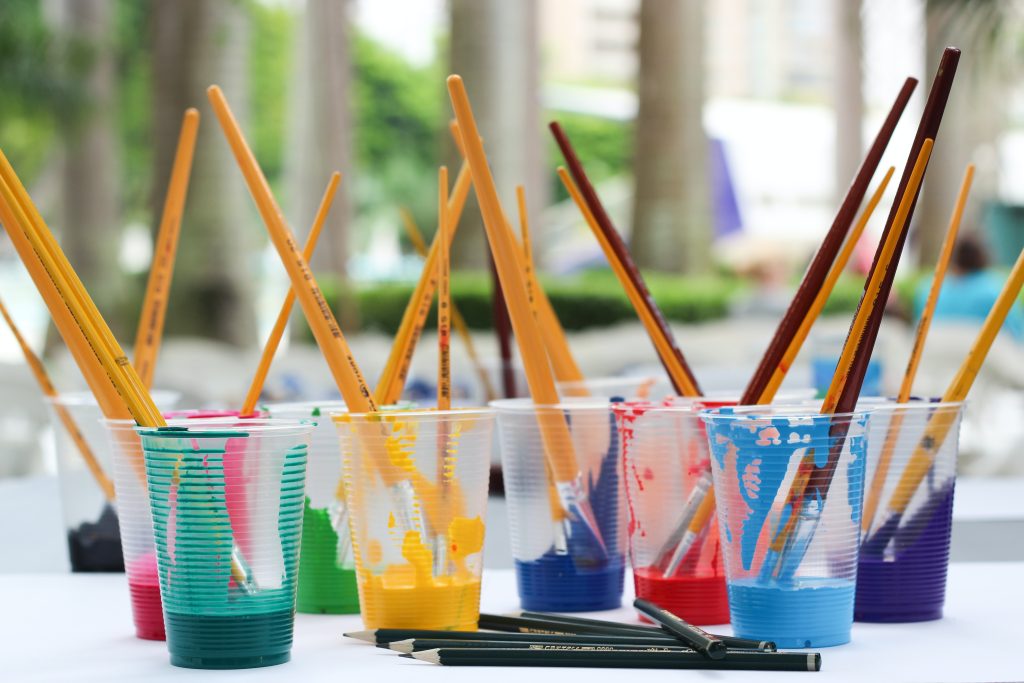Tsuktiben Jamir
In art, inspiration can lead to incredible creations that captivate the imagination and evoke a sense of wonder. However, sometimes that inspiration becomes the centre of a brewing conflict, as two artists find themselves entangled in a dispute over a mesmerizing display of coloured light. Yvette Mattern, a visual artist, claims that her signature work, “Global Rainbow,” has been copied by the creators of the San Francisco Pride laser light installation titled “Welcome.” With emotions running high, the clash between artistry and originality has ignited a debate that questions the boundaries of artistic expression and ownership.
“Global Rainbow” has significant personal meaning for Mattern. Her art began to take shape after President Barack Obama was elected, and it was inspired by a rainbow that did dance across a pond in Massachusetts. Mattern connected deeply with the rainbow’s image of inclusiveness and harmony as a person of mixed race. On Martin Luther King Jr. Day in 2009, she debuted her laser light work, which cast bright colour beams throughout downtown Manhattan. From then, her work travelled the world and became a potent representation of unity and variety.

Courtesy: StirWorld.
But when Mattern learned about the San Francisco “Welcome” laser light show, her entire world was flipped upside down. The miles-long rainbow-coloured laser beam hauntingly resembled something she had made. She couldn’t help but feel confused and betrayed. She had long desired to exhibit her art in San Francisco, but it appeared that someone there had adopted a similar idea without giving her proper credit.
Mattern contacted Illuminate, the non-profit art collective responsible for “Welcome,” demanding recognition for her copyrighted work. Illuminate’s founder, Ben Davis, vehemently denied any wrongdoing, claiming Mattern’s accusations were unfounded. Davis insisted that the display held its power, capturing the essence of San Francisco in a way distinct from anything Mattern had ever created.
The conflicting viewpoints spark a fascinating discussion about the limitations of artistic ownership. Lawrence Townsend, a copyright lawyer, clarifies the situation by stating that while ideas are not legally protected, their distinctive expression may be. In this instance, Mattern contends that the artist’s aesthetic expression goes beyond the straightforward idea of using lasers to broadcast rainbow colours.
He told CBS, “It’s discerning the difference between the–gain–the idea which anybody should be able to do of projecting the rainbow colours on the sky with lasers, and what is something beyond that is an original expression that is something that the artist created that goes beyond that mere idea.”
The artists are at a turning point as the debate continues. Motivated by a sense of unfairness, Mattern has filed a lawsuit and sent letters to Illuminate requesting that they take down the “Welcome” installation. She pledges to take legal action if required to defend her creative integrity. She does it out of principle, claiming that her work is hers and deserves respect.

Courtesy: CBS.
Davis, though, sticks to his position and emphasises the difference between the concept and each manifestation of it. He asserts that the idea of a laser beam emitting colours should be open to interpretation and investigation by others and cannot be solely appropriated by one artist.
As this battle over artistic expression unfolds, the art world watches with intrigue. The clash between Mattern and Illuminate brings to the forefront the complexities of creativity, originality, and the attribution of artistic ownership. Ultimately, the resolution of this conflict will shape not only the fate of these particular artworks but also the broader understanding of artistic inspiration, influence, and the boundaries of creative expression.
Ultimately, the courtroom may hold the answers both artists seek. Only time will tell whether the courts will validate Mattern’s claims or establish a precedent for more excellent artistic interpretation. Regardless of the outcome, this clash reminds us of the delicate balance between artistic inspiration and the protection of artistic expression, raising questions that will continue to shape the art world for future generations.

Contributor





